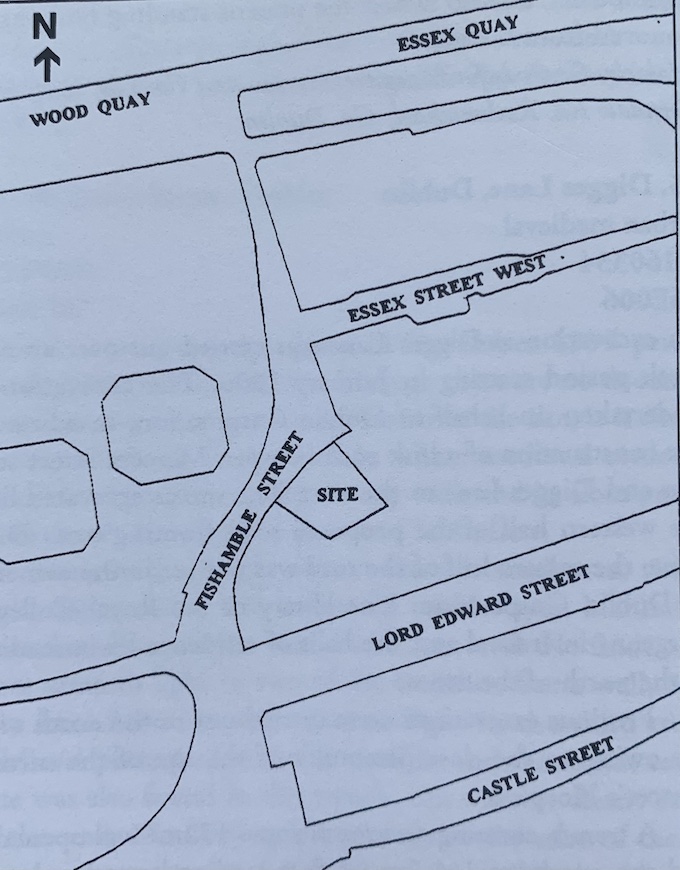County: Dublin Site name: DUBLIN: Fishamble Street
Sites and Monuments Record No.: N/A Licence number: 95E0146
Author: Neil O'Flanagan
Site type: Habitation site
Period/Dating: Medieval (AD 400-AD 1600)
ITM: E 715210m, N 734078m
Latitude, Longitude (decimal degrees): 53.344372, -6.269771
This site was notable for the lack of any excavation prior to recent development plans. No basement was anticipated in the building, and the disturbance of the ground deposits was confined to seventeen large piles after the level of the archaeological deposits had been established in an earlier site assessment by Declan Murtagh (Excavations 1994, 25–6). The following account is therefore a description of the findings recovered during the course of monitoring in July-August 1995. The site is directly opposite that excavated by Pat Wallace, where the Civic Offices now stand, and adjacent to the site excavated more briefly by Margaret Gowen in 1994 (Excavations 1994, 24).
Since it was expected that the auguring of the ground for piling would remove a huge amount of archaeological deposits, the removed ground was sieved to retrieve finds. The soil brought to the surface was placed in skips and removed from the site to be systematically sieved through a half-inch steel mesh and sorted. Some 60m3 of material were sorted, producing 93 finds of wood, metal, leather, amber, antler and bone.
Detailed recordings of the process of auguring, soil removal and loading were kept throughout the monitoring, enabling the finds to be provenanced to four general categories or 'loads' in each pile-hole. Each category related to the height below the surface; while the archaeological significance of such recording is debatable, it is noteworthy that the great bulk of the finds arose from loads 2–3, in the middle of the archaeological stratigraphy, and less than 10% from load 4, the lowest. Another noteworthy feature of the recording was the spatial distribution of the finds, with the overwhelming majority provenanced to the pile-holes adjacent to the street. In addition, it was possible to arrive at some general conclusions on the probable height of the boulder clay, the anaerobic soils, and the archaeological stratigraphy as a whole.
The finds were entirely of Hiberno-Norse origin; the Anglo-Norman influence was conspicuously absent, almost certainly an indication of a later scarping of the upper deposits following the insertion of basements in the eighteenth/nine-tenth centuries. Timber pieces indicating post-and-wattle remains surfaced in the pile-holes adjacent to the street, underlining the likelihood of houses under the surface opposite those recovered in the National Museum excavations.
Editor's note: Although excavated in 1995, this report did not arrive in time for inclusion in the bulletin of that year.

27 South William Street, Dublin 2